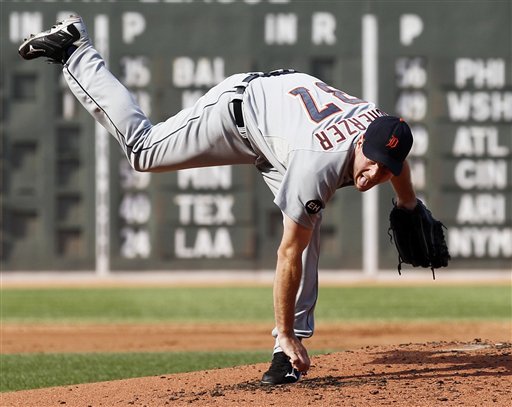Palooza ’17 Recap
For the second time in two years, I had the pleasure of heading down to Nashville, Tennessee to present at Lantz Wheeler’s Pitch-a-Palooza. Affectionately known by those who attend as simply “Palooza”, the conference is widely regarded as one of the premier pitching and hitting events of the year. With the likes of Eric Cressey, Paul Nyman, Mike Reinold, Kyle Boddy and Dr. Allen Sills presenting every year (among many other incredible coaches) you can immediately see why it has gone from about 48 attendees in 2013 to over 350 this year.
Prior to leaving I was sent an email by Lantz reminding me to bring my ‘A game’ because there were going to be lots of high profile people attending.

(I think this ended up at 22 total organizations represented)
I think the biggest theme of the 20 something presentations throughout the weekend was individualization.
Eric Cressey started it off by shining a light on the importance of not just blindly assuming a pitcher needs thoracic extension. Some throwers exhibit more of a flat thoracic spine, a potential byproduct of the popular ‘down and back / chest up’ cueing, creating a lack of thoracic flexion in the throwing motion. If you look at someone like Max Scherzer, who Eric takes care of in the off-season, you’ll get a good appreciation for how much spinal flexion he ends up using in his motion.

Lots of flexion through ball release

#pitchingninja
Mike Reinold echoed the theme while guiding us through his thought process on long term development, workload management, and individualizing arm care routines. The rep, set, and intensity scheme for a band program, for example, shouldn’t just be widely distributed throughout your staff. Some guys can’t handle what others can.
Not surprisingly, Kyle Boddy touched on the concept as well, while in the process hinting at Drivelines soon to be released player management software (which has incredible potential to help a lot of programs).
As the rest of the weekend rolled out amazing coach after amazing coach, the individualization undertone continued to come up. Whether it’s approaching command, setting up your bullpens, or working on your launch angle, it’s critical to remember that we are ultimately dealing with human beings. Human beings are more than just a number or words on a piece of paper.
I tried to touch on this concept in my own presentation; that we are ultimately dealing with an ecosystem. A complex and dynamic ecosystem that’s composed of different biological & psychological states, learning histories & conceptualizations, social histories etc. Every system has individuality and may respond differently to the same input. We are working with a bunch of N=1s. Not every player has the same needs and, thus, not every player should have the same program.
When it comes to filling buckets, I feel as if the systematic and comprehensive quantification of available joint range of motion – and therefore a sense of total movement capacity – doesn’t get enough love. If we are going to work towards a desired movement solution, we must be able to account for the constraints on the system. This includes the organismic constraints. This is where individualization on movement & mobility fits in. Not every player needs more thoracic extension.

As Eric Cressey harped on yet again this year, we need to continue to bridge the gap between therapists, skill coaches and strength and conditioning coaches. True individualization can only occur when there is an integrated approach. He recommended reaching out and building a network that understands your sport; to find a sports medicine doctor or a manual therapist that understands throwers. I think that this can go even further in that manual therapists and strength & conditioning coaches should seek out skill coaches as well. In a sport where non-contact injury is high the consequences of a real-world game of broken telephone can lead to dramatic. In my experience, we end up with is misinformation going both ways, frustration or resentment on both ends, and a player who ultimately suffers.
This is exactly why we created Baseball Development Group. We can oversee every aspect of the performance spectrum, from rehab to high performance, under the same roof and philosophy. So PLEASE expand your network – especially into the therapy / sports med world.
In a time where we have access to tons of free programs, information and technology, I think that this has driven us one of two ways. For some, and especially the people who attend these sort of events, this ease of access allows us to better shape our philosophies, principles and improve our trial and error. Kyle hammered this home quite well. We haven’t lived in a time where it’s easier to create a hypothesis, collect good data, and analyze if what you’re doing is actually working. We haven’t lived in a time where it’s easier to Google answers to our questions, reach out to an online network and get help along the way. The limiting factor for a lot of it is mainly work ethic. Ask questions, seek answers, be humble enough to change your opinion.
The second way that this is going is it’s making it easier for people to fool the uninformed. It’s easy to market that you’re doing X program with X technology to parents and players, showcasing a big what, without much of an understanding on the why. Blindly throwing a thoracic spine extension mob on every player or asking every kid to sleeper stretch may be doing more harm than good.
As good as the presentations were, and they were very, very good, the biggest reason why I would encourage coaches to attend Palooza is for the hallway & hotel conversations. Having the opportunity to listen in on guys like Eugene Bleecker, Ryan Parker and Bobby Tewksbary go back and forth on their hitting philosophies is incredible. You are afforded the opportunity to speak openly about your own biases and struggles with unbelievably well thought out people who may not be social media heavy (ahem Tyler White). Moreover, you can get insight on the daily issues that coaches, strength coaches and therapists face with every day; from the high school level, all the way up to the MLB.
Most importantly, if you’re doing it right at least, you end up leaving with more questions than you have answers. And questions weaponize curiosity, turning it into a tool for changing behavior.
My big take aways:
- The highest levels of baseball performance are trending towards a data-driven, hypothesis testing and individualized approach to development.
- Setting yourself up with an appropriate needs analysis, from the standpoint of filling the major buckets, will set up your program for success.
- Grow your network & be comfortable referring out.
Until Palooza ’18,
Steve
